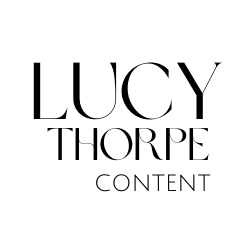The skin care market worldwide is projected to grow to US$218.00bn in 2029. This is a predicted growth of 2.94% between 2024 and 2029. There’s a huge amount of potential and a massive commercial market growth for skincare.
With that in mind, let’s take a look at 100 common skincare ingredients and the number of people searching for them on Google every month in the UK to understand trends and demand.
Skincare keywords and Google search volumes
Search is huge when it comes to skincare, as people look for tips, ideas and information about what to add into their routine. Here are some of the most popular skincare ingredients, along with the search volumes for them.
- vitamin d 135000
- water 135000
- honey 90500
- hyaluronic acid 74000
- salicylic acid 74000
- retinol 60500
- niacinamide 49500
- aloe vera 40500
- coconut oil 40500
- benzoyl peroxide 40500
- glycolic acid 33100
- tea tree oil 27100
- vitamin k 27100
- argan oil 22200
- witch hazel 22200
- caffeine 22200
- coenzyme q10 22200
- chamomile 22200
- lactic acid 22200
- glycerin 18100
- jojoba oil 18100
- evening primrose oil 18100
- shea butter 14800
- urea 14800
- peptides 14800
- propylene glycol 12100
- rose water 12100
- oregano oil 9900
- kojic acid 8100
- sorbitol 8100
- alpha lipoic acid 8100
- rosehip oil 8100
- lavender oil 8100
- phenoxyethanol 6600
- alpha arbutin 6600
- squalane 5400
- grapeseed oil 5400
- titanium dioxide 5400
- mandelic acid 5400
- cetearyl alcohol 4400
- dimethicone 4400
- zinc oxide 4400
- clary sage oil 3600
- sodium hyaluronate 3600
- tartaric acid 2900
- colloidal oatmeal 2900
- green tea extract 2400
- rice bran oil 2400
- cocamidopropyl betaine 2400
- hemp seed oil 2400
- sodium lactate 1900
- allantoin 1900
- ferulic acid 1600
- moringa oil 1600
- macadamia oil 1600
- ceramides 1600
- borage oil 1300
- tocopheryl acetate 1300
- sodium ascorbate 1300
- arbutin 1000
- sodium cocoyl isethionate 880
- lactic ferment 590
- sodium ascorbyl phosphate 480
- ethylhexyl methoxycinnamate 480
- meadowfoam seed oil 480
- dandelion extract 390
- retinaldehyde 390
- ginkgo biloba extract 320
- pomegranate extract 320
- licorice root extract 320
- chia seed oil 320
- farnesol 320
- cypress oil 320
- sodium pca 210
- sodium stearoyl lactylate 170
- tamarind extract 170
- willow bark extract 170
- lemon balm extract 140
- cinnamon extract 140
- peach kernel oil 110
- calendula extract 90
- octocrylene 80
- algae extract 70
- kelp extract 70
- cucumber extract 50
- ylang ylang oil 10
- chlorella extract 10
This can help you spot trends, work out what your audience is interested in, what they want more information on and the type of content your beauty brand should be creating. Remember, it’s not always about going for the keywords with the highest searches as these will often have the most competition.
Think about your target audience, the information they’re seeking, the problems they have and the questions that they want answered. You can find this information by searching online and looking at the “people also ask” result that Google throws up.
Also worth remembering, some of these aren’t just beauty ingredients, and people will be searching for them for other reasons too which can skew the numbers a little – use your common sense when you look at keyword volumes and make sure you look at how competitive they are too.
Work with a beauty and skincare copywriter
Looking for a beauty copywriter to helo you create beauty content for your brand? Get in touch to find out more about how we can work together – you can check out my portfolio too.

